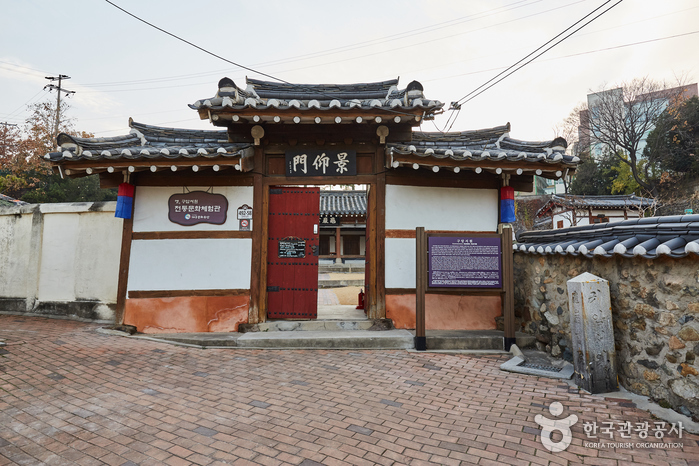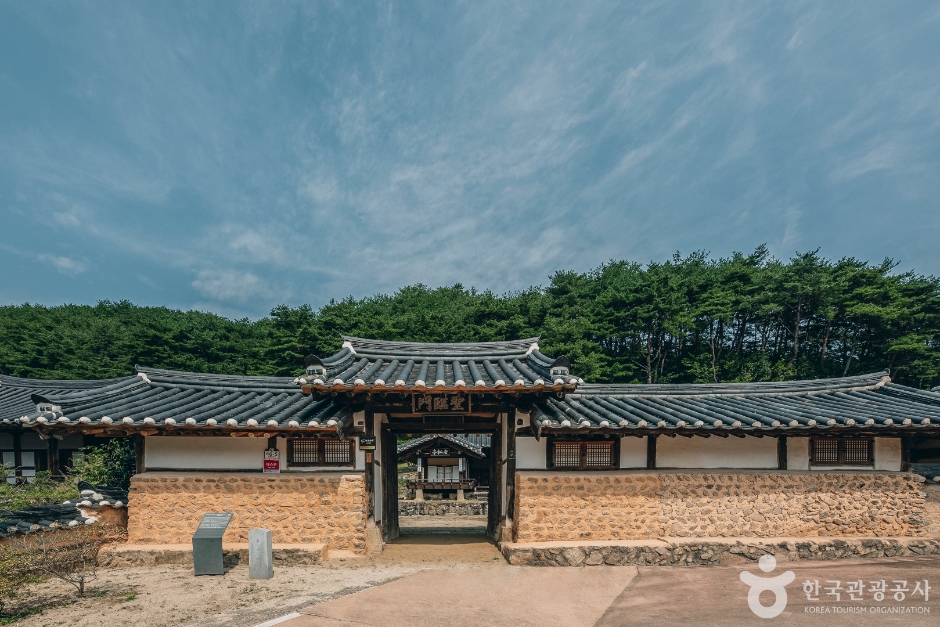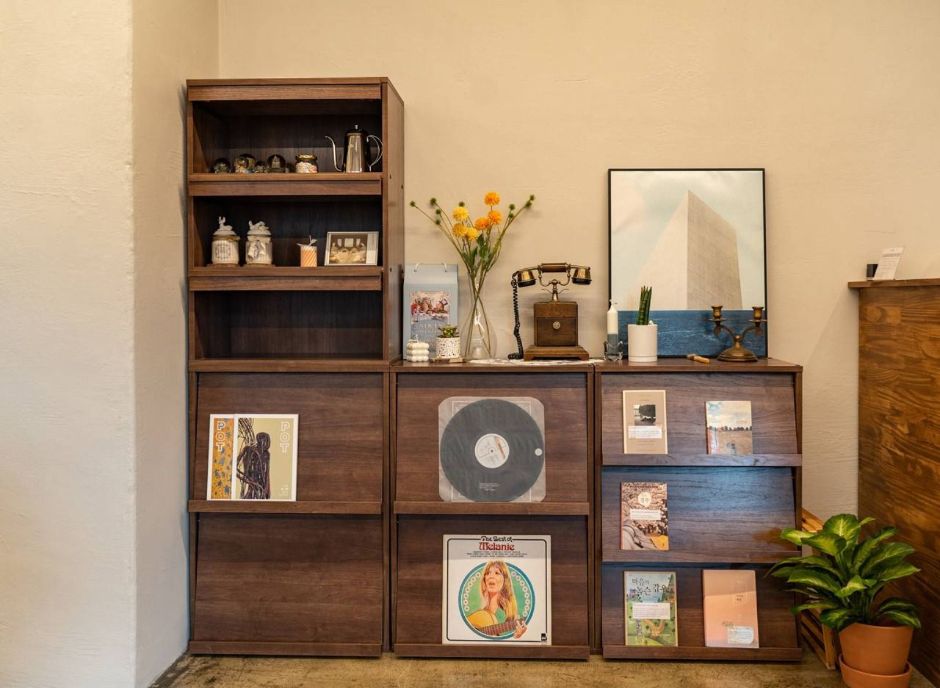Urban place gangnam
2021-04-09
30, Hyoryeong-ro 77-gil, Seocho-gu, Seoul
+82-02-3474-9108
Urban Place Gangnam located near Gangnam Station, Seoul is a 20-story building with 257 guestrooms. Parking is available on the basement up to the sixth floor. There are easy means of public transportation in the vicinity of the hotel including Gangnam Station on Seoul Subway Line 2, which is a mere 2-minute walk from the hotel. All the guestrooms are furnished with a kitchen, making it a great choice for business travelers and family tourists alike. There is a coin laundry on the 1st floor. The lobby on the first floor is very comfortable with various newspapers, magazines, and books, with a bakery & cafe right next to the lobby. The fitness gym is on the 9th floor, where you can enjoy a view of the city while working out. The hotel also has a conference room for business travelers who need to meet with their clients. Since it is located in Gangnam, the hub of public transportation, it’s very easy to get to many of the popular tourist destinations in Seoul.
Sieunjae [Korea Quality] / 시은재 [한국관광 품질인증]
2021-04-05
439, Samil-daero, Jongno-gu, Seoul
+82-10-5355-3029
Located in Gyeongun-dong, Jongno-gu at the very heart of Seoul, Sieunjae is a hanok with a longstanding tradition. It has three guestrooms including the anbang (main room), byeolchae (detached building), and jakeunbang (small room). The anbang is the only room with a living room, where various items of old furniture, including a comfortable sofa, create an antique atmosphere. The communal bathroom and toilets are supplied with toiletries, while the communal kitchen is equipped with cooking equipment and a washing machine.
The house can be rented either as individual accommodations or in its entirety. As it is situated in Jongno-gu, at the very heart of Seoul, guests can easily reach many nearby major tourist attractions. Car users are advised to use the public parking lot as the house has no parking spaces. Entering by a small gate, the little flowerbed comes into sight. This old hanok shows traces of repair works on the tiled roof.
Le IDEA Hotel Busan Station [Korea Quality] / 르이데아호텔 [한국관광 품질인증]
2023-04-13
16-10, Jungang-daero 180beon-gil, Dong-gu, Busan
051-441-0708
Le IDE:A Hotel is a boutique hotel opened in 2017. Located near Busan Station, Dong-gu, Busan, it has large rooms with area of over 33㎡ and comes with a large bed and a whirlpool bathtub. The 9-story building houses a total of 55 rooms that can accommodate up to 160 people in all. The rooms on the fifth floor offer a great view of Busan Harbor Bridge and the ocean. Some of the rooms are furnished with personal safe and closet for long-term guests. The Business Rooms with area of 16㎡ look like a studio room with some office supplies. The Group Rooms can accommodate up to 17 people, and they are available in both Korean ondol (floor-heated) rooms and those with a bed. The hotel is conveniently located near Busan Station and other means of public transportation such as metro bus, making it easy to get to other parts of the city. Nearby tourist destinations include Gukje Market, Jagalchi Market, Yongdusan Park, Taejongdae, and Downtown Busan.
Old GuAm-seo-won
2021-04-09
492-58, Gukchaebosang-ro, Jung-gu, Daegu
+82-53-428-9980
Old Guam Seowon is a traditional Korean guesthouse located between Dongseong-ro and Seomun Market in Daegu. With land area of 2,300㎡, it has a total of six guestrooms, a shared living room, a bathroom, and a kitchen. The house has a large yard where guests can play various traditional Korean games such as "tuho" and "jaegichagi." In the backyard, guests can shoot arrows and try on traditional Korean clothes. Both the guestrooms and bathrooms were remodeled to have some of the modern conveniences. If you want, you can cook at the shared kitchen. Bread and cup noodles are served for breakfast. Situated in a residential area downtown, it's both quiet and very conveniently located for those planning to tour the city. Nearby popular tourist destinations include E-World, Daegu Nature Park & Spa Valley, Seomun Market, Gukchaebosang Memorial Park, and Kim Gwangseok-gil Street, with easy public transportation to and from the downtown area.
Nosongjeong Head House (노송정종택(퇴계생가))
2025-06-17
46-5, Onhyejungma-gil, Andong-si, Gyeongsangbuk-do
Traditional Resort Gurume [Korea Quality] / 구름에 [한국관광 품질인증]
2023-04-13
190, Minsokchon-gil, Andong-si, Gyeongsangbuk-do
+82-54-823-9001
Gurume Resort is where early traditional Korean guesthouses are located. The traditional Korean houses were relocated to this place after a flood. The resort consists of seven traditional Korean houses named "Baksanjeong,” "Cheongongjeong,” "Gamdongjaesa,” "Palhoedangjaesa,” "Gyenam Old House,” "Seounjeong,” and "Chilgok Old House." Built in the 17th century, "Baksanjeong" is the oldest house there, and it has one guestroom. “Cheongongjeong,” “Gamdongjaesa,” and “Palhoejaesa” were built in the 18th century, whereas "Seounjeong,” "Gyenam Old House,” and "Chilgok Old House" were built in the 19th century. For this reason, the traditional Korean houses look slightly different from each other with one thing in common: they were all renovated and equipped with comfortable modern facilities while preserving most of the features of a traditional Korean house. All the guestrooms are furnished with bathroom with shower and air conditioning system. A hi-tech security system is also installed to ensure the safety of the guests. In addition to Gurume Resort, Happy Traditional Village also has a book café housed in a traditional Korean house as well as dining restaurant, experience rooms, and plaza, allowing the visitors to lodge and engage in a wide range of activities. There is a special package for staying at an old traditional Korean house and using the auxiliary facilities. For more information on various events and news, please visit the Happy Traditional Village website.
Songgangjungsa [Korea Quality] / 송강정사 [한국관광 품질인증]
2021-04-05
560, Yongma-ro, Sabeol-myeon, Sangju-si, Gyeongsangbuk-do
+82-10-5230-9818
Songgang Jeongsa is a traditional Korean guesthouse located near Gyeongcheondae along Nakdonggang River with a beautiful landscape. The traditional Korean house is designed to be in harmony with the natural surroundings. The single-story house has two guestrooms: one “ondol” room without a bed and one guestroom with a bed. The guesthouse has a shared kitchen and a living room decorated with traditional items. The guesthouse owner also runs the Traditional Food Research Society, where you can experience and enjoy traditional Korean food upon reservation. It also serves traditional Korean tea and snacks that are healthy and delicious. You can rent a bicycle from the guesthouse to go for a ride along Gyeongcheondae and Nakdonggang River. Nearby tourist destinations within walking distance from the guesthouse include Sangju Bicycle Museum, Donam Seowon, and Sangju Museum. The room rates and services are subject to change in the middle of summer and during peak season, so be sure to ask the guesthouse owner for details before booking a room.
Hwarang Guesthouse (화랑게스트하우스)
2025-06-05
136-1, Wonhyo-ro, Gyeongju-si, Gyeongsangbuk-do
Hwarang Guesthouse near Daereungwon, Gyeongju-si, Gyeongsangbuk-do, offers guestrooms each with separate toilet and bathroom. Refrigerators and laundry facilities are provided for guests, as are a shared-use PC and fax machine, while travel guides and other books are available in the lobby. Silla Kingdom sites such as Daereungwon, Cheomseongdae, Donggung Palace and Wolji Pond are reachable on foot; alternatively residents can hire a bicycle for 7,000 won a day.
KELIMGUNG [Korea Quality] / 계림궁 [한국관광 품질인증]
2023-04-13
932, Poseok-ro, Gyeongju-si, Gyeongsangbuk-do
+82-10-2705-8121
According to a Korean myth, Gyerim Forest in Banwolseong Fortress, Gyeongju is the birthplace of Silla Kingdom founder Kim Alji (of Gyeongju Kim’s Clan) about two thousand years ago. Gyerimgung Hanok Pension is located 2 kilometers from Banwolseong Fortress and is named after the forest. Inside the gate are guestrooms named “Yoseok Room” with a large window in the detached building, “Sirim Room” and “Alji Room” in the main building, and “Asadal Room” and “Asanyeo Room” right next to it. The guesthouse has a shared kitchen and two “wondumak” (a Korean lookout hut on stilts usually in a melon field for guests to use). Barbecue facilities are also available upon reservation. The guesthouse offers a number of fun traditional programs including “Starting a Fire for Traditional Korean Iron Pot,” “Neolttwigi,” and “Yunnori.” Gyeongju Oreung in the vicinity of the guesthouse is a great place to take a walk. Nearby popular tourist destinations include Banwolseong Fortress, Cheomseongdae Observatory, and Daereungwon Tomb Complex. The guesthouse can be a great choice for those looking for a quiet place to stay overnight because it's situated in a residential area slightly off the main tourist zone.
Motel Susan [Korea Quality] / 수산모텔 [한국관광 품질인증]
2023-04-13
45-5, Susan 1-gil, Sonyang-myeon, Yangyang-gun, Gangwon-do
+82-33-672-7848
Susan Motel in Susanhang Port has a total of 10 rooms, most of which offer a great view of the East Sea. The Twin Room has the best view of all, and it’s one of the best places to enjoy the sunrise in comfort. All the rooms have a terrace. The "Ondol Condo Room," and "Twin Condo Room," have a kitchen where the guests can cook. Susanhang Yatch Marina is very accessible to those wishing to enjoy water sports. Susangbong Peak Observatory is just a 5-minute walk from the motel, commanding a great view of Mulchi Beach to the north and Hajodae Beach to the south. Osan Beach and Osan-ri Prehistory Museum are only 2 kilometers away from the motel as well, with Naksansa Temple and Naksan Beach a mere 15-minute ride from the motel. The motel is very conveniently located, with both Yangyang Express & Intercity Bus Terminal and Yangyang International Airport nearby.
![Sieunjae [Korea Quality] / 시은재 [한국관광 품질인증]](http://tong.visitkorea.or.kr/cms/resource/51/2447351_image2_1.jpg)


![Traditional Resort Gurume [Korea Quality] / 구름에 [한국관광 품질인증]](http://tong.visitkorea.or.kr/cms/resource/56/2581156_image2_1.jpg)

![KELIMGUNG [Korea Quality] / 계림궁 [한국관광 품질인증]](http://tong.visitkorea.or.kr/cms/resource/67/2543967_image2_1.jpg)
![Motel Susan [Korea Quality] / 수산모텔 [한국관광 품질인증]](http://tong.visitkorea.or.kr/cms/resource/82/2543882_image2_1.jpg)
 Español
Español
 한국어
한국어 English
English 日本語
日本語 中文(简体)
中文(简体) Deutsch
Deutsch Français
Français Русский
Русский